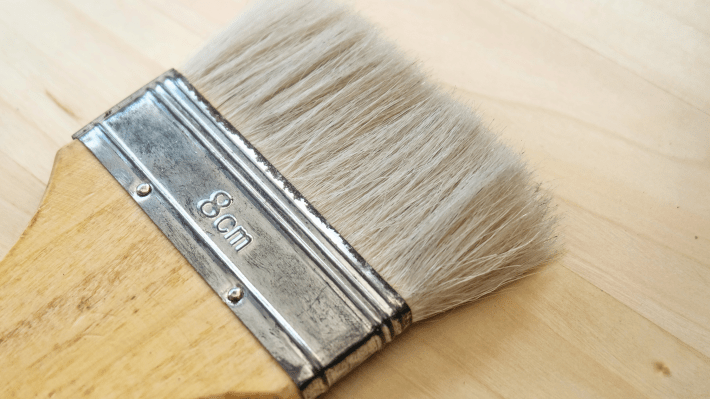Learn about the different types of painting and decorating brushes and when to use them. This project explains the different types of brushes that are available and how you should use them to get the best possible paint finish. There is a huge range of different paintbrush types, so it is worth knowing which is the best one for the job that you are doing.
Full article with thanks to: diydoctor.org.uk/projects/typesofpaintbrush.htm
Recognising and choosing different types of painting and decorating brushes for different jobs is something even the pros have trouble with now.
Largely this is because brushes have got so much cheaper over the last 10 years it is now possible to buy reasonable quality brushes for such a low price it is cheaper to throw them away when the job is finished than it is to spend time cleaning them properly.
This is, however, still not true of the top quality brushes used by the top quality tradesmen and it is always a sign of a good decorator when you can see them cleaning their paintbrushes. It may even be a question you want to ask them when you are getting quotes for a decorating job.
Paintbrushes are made from either synthetic fibres or natural hairs. Natural hair brushes are usually Chinese Hog or badgers hair and are recommended for use with oil-based paints as they flow more smoothly and actually paint on the surface rather than simply “spread” the paint about.
Synthetic brushes, e.g. Nylon or Polyester can be used with all paints but their use with water-based, emulsion paints, is more usual. Chinese hog bristles absorb water which makes using them with water-based paints very difficult and getting a good finish is almost impossible.
Other natural fibres used for good quality paint brushed are Camel hair brushes, Squirrel hair brushes and Sable hair brushes.
Specialist Badgers hair brushes are probably the most expensive brushes and have the softness to allow an excellent finish with oil-based paints and all varnishes. When used properly they do not leave brush marks and literally smooth the paint or varnish over to a great finish.
These are expensive compared to the throw away synthetic brushes but are much easier to clean and take care of.
Paintbrushes come in a variety of sizes for different uses. A 6 inch (150mm) brush would be great for painting a wall with emulsion but not a great deal of use for painting skirting boards. Different paint brushes also have different handles.
Paintbrushes with wooden handles usually reflect the cost of the brush and are better, and easier to hold while plastic handles do tend to reflect a cheaper brush.
The two real problems with cheaper brushes are that the bristles tend to be stiff, leaving brush marks on the surface, and the bristles can fall out.
This is a huge hindrance when painting a tricky door or window frame and add hours to the painting when picking hairs out of new paintwork.
Always look at the ends of the bristles when choosing a paintbrush. Good quality brushes have split ends.
This splitting of the ends is called flagging and flagged end brushes will allow more paint to be collected and delivered to the surface in a much more even and smoother way. The more a brush is flagged the more paint it will hold and it will leave paint on the surface rather than brush marks.
A further sign of a good quality brush is tapering on the bristles from a thicker end inserted into the handle to a thinner “business” end.
A good quality paintbrush will also have bristles of varying lengths. This also helps to hold more paint and release it more smoothly onto the surface.
Cheaper brushes contain single thickness, generally unflagged bristles.
The best synthetics are Nylon and Polyester brushes. These are usually tapered and multiple sizes are used in the brush to give a better paint holding quality.
The handle end, where the bristles are held, is called the ferrule. In this ferrule, there are tiny (in good quality brushes) wooden wedges that spread the bristles apart a little to give better paint holding quality.
In poor quality brushes, these wedges are bigger and the amount of bristle is less.
For specialist painting jobs like painting windows and cutting in edges, smaller, cut end brushes can be used. These ends can be cut to a point, as is the case with a sash brush, or cut like a chisel to allow the decorator to get into the sharpest of corners.
Once again it can be seen that to get the best out of any painting job, the use of the right products is essential.
Special brush combs can be bought for combing the bristles of good quality brushed when they have been cleaned. More can be seen about this in our cleaning and restoring paint brushes project. Look to the left of this page for more painting related projects.
Full article with thanks to: diydoctor.org.uk/projects/typesofpaintbrush.htm
Did you enjoy that? Why not share this article.
Get useful painting and decorating information on our advice blog. If you want a professional to take care of your painting and decorating, we’re painting and decorating specialists! Learn more about our services here.

